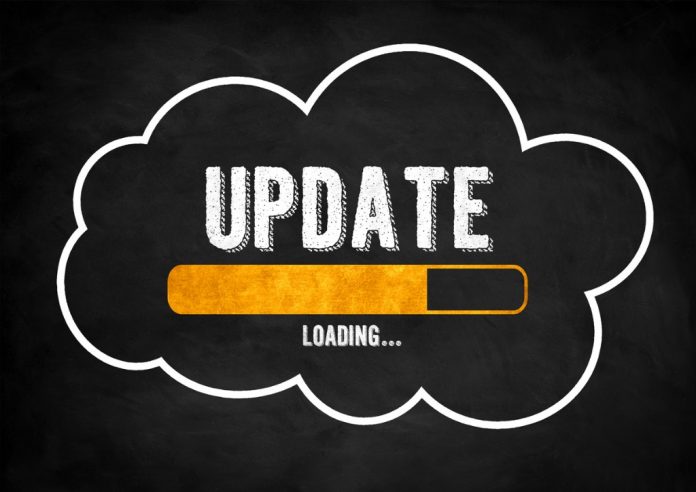In this post I consider the February 2022 T-SQL Tuesday #147 Invitation “Upgrade Strategies” and look at the importance of upgrades in the cloud.
For this month’s T-SQL Tuesday, VoiceOfTheDBA’s invitation was as follows:
This month I want you to write about how you look at SQL Server upgrades. A few things you might think about:
Why we wait to upgrade?
Strategies for testing an upgrade
Smoke tests or other ways to verify the upgrade worked
Moving to the cloud to avoid upgrades
Using compatibility levels to upgrade an instance by not a database.
Checklists of things to use in planning
The time it takes to upgrade your environment
What you evaluate in making a decision to upgrade or not?
Anything else
Immediately I was drawn to “Moving to the cloud to avoid upgrades”. Some perceive the cloud as a ‘set it and forget it’ environment. The reality is that cloud services still require upgrades that can cause security vulnerabilities and data issues if left unchecked.
What follows are some SQL based observations from my experience to date. While it’s true this list is AWS specific, it isn’t AWS exclusive as Azure and GCP operate similar services with similar considerations.
EC2 Upgrades
When I create a new EC2 instance I can generally expect it to be running the latest build of my chosen OS. However, an instance that has been running for a while will soon find itself needing system updates like any other computer. Some updates offer performance improvements or new features and are essentially optional. Others fix security vulnerabilities and bugs and are non-negotiable.
If that instance is running my relational database of choice, that too will need a range of updates from the desirable to the critical. AWS views this as a customer responsibility, with the AWS Shared Responsibility Model including the following:
Customers that deploy an Amazon EC2 instance are responsible for management of the guest operating system (including updates and security patches), any application software or utilities installed by the customer on the instances, and the configuration of the AWS-provided firewall (called a security group) on each instance.
However the managed services are viewed differently:
For abstracted services, AWS operates the infrastructure layer, the operating system, and platforms, and customers access the endpoints to store and retrieve data. Customers are responsible for managing their data (including encryption options), classifying their assets, and using IAM tools to apply the appropriate permissions.
So what if I get AWS to run my database for me?
RDS Upgrades
Amazon Relational Database Service (RDS) offers managed relational databases including Microsoft SQL Server, MySQL and PostgreSQL. RDS still uses EC2 instances but here they are managed by AWS and are not accessible by the user. This means OS management is no longer a customer responsibility.
Upgrades to the database engine are still a factor though. AWS try to make this as painless as possible – upgrades can be done using the console, AWS CLI or the RDS API. This is still a manual process though, although it is possible to upgrade some minor engine versions automatically.
However, even on rails it’s still possible for an update to go wrong. AWS have a nine-point checklist for testing an upgrade that wouldn’t be out of place on-premises. AWS also encourage database snapshots and non-production testing. While RDS removes infrastructure complexity, the data is still the customer’s responsibility and needs the same care as ever.
Operational Upgrades
AWS constantly release new services intended to simplify workflows and reduce costs. Even when an organisation’s cloud setup is fully mature, it can still benefit from upgrading to these services.
When Athena debuted in 2016 it enabled the analysis of data in S3 using standard SQL. This removed the need for complex ETLs and data warehouses, and with Athena being serverless it was faster to set up and cheaper to operate than EC2, RDS or Redshift.
In 2020 Amazon announced new EBS GP3 volumes. GP3s have separate settings for performance and storage, and are recommended for applications like MySQL that need high performance at low costs. This meant organisations could save money by reducing their use of the more expensive IO1 volumes.
More recently, AWS announced a new S3 Glacier Instant Retrieval storage class in 2021. This made S3 less expensive for a range of use cases including SQL backup storage and data lake archival.
Conclusion
The Cloud offers numerous opportunities for individuals and organisations to develop, build and deploy quicker and easier. But upgrades are a fact of life in technology regardless of platform. The cloud is still a collection of computers, which still need to respond to changing requirements and threats.
A well maintained and fully upgraded cloud environment is reliable, scalable and secure. A poorly maintained one can, at best, be expensive, slow and unwieldy. At worst it can be unreliable, vulnerable and in breach of terms of service.
If you want to check the health of your AWS account, AWS offers their Trusted Advisor and Well-Architected Tool services. These give free architectural advice, security recommendations, cost optimisations and best practice guidance.
If this post has been useful, please feel free to follow me on the following platforms for future updates:
Thanks for reading ~~^~~


One reply on “Can SQL Upgrades Be Avoided In The Cloud?”
[…] early February. I was going to publish this post around that time too, but I wanted to finish my T-SQL Tuesday post first and then had a busy […]